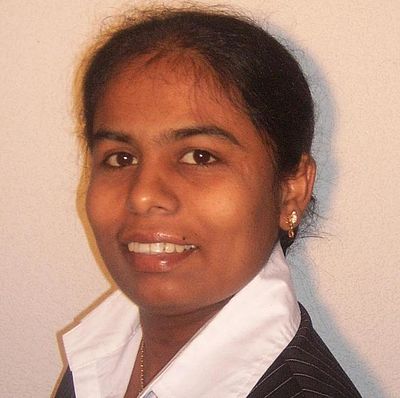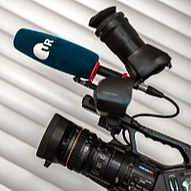“It is time to usher in a new era of science”
Dr. Chitra Rajendran has been elected as Vice Chair of the User Executive Committee (UEC) for the Linac Coherent Light Source (LCLS) at Stanford University
27. March 2024
Dr. Chitra Rajendran, from the Institute of Biophysics and Physical Biochemistry at the University of Regensburg, has been elected as Vice Chair of the User Executive Committee (UEC) for the Linac Coherent Light Source (LCLS) at Stanford University in 2023.
LCLS is the world's first hard X-ray free-electron laser facility, managed by Stanford University and located at the SLAC National Accelerator Laboratory. The LCLS fires the world's most powerful X-ray laser, emitting up to one million X-ray flashes per second, which is 8,000 times more than its predecessor. This represents a revolutionary leap from 120 pulses per second to one million pulses per second. It represents a new era in science, elevating X-ray science to a higher level.
LCLS-II is the first XFEL (X-ray free-electron lasers) to be based on continuous-wave superconducting accelerator technology (CW-SCRF). It will have a linac energy of 4 GeV and will drive two tunable-gap undulators (SXU, HXU). LCLS-II will generate soft X-ray pulses ranging from 0.25 to 5 keV (2.5 Å) at repetition rates of up to 1 MHz. LCLS-II will produce ultrafast hard X-ray pulses with a uniform or programmable time structure at a repetition rate of up to 1 MHz. This is a significant improvement compared to the burst-mode nature of the European-XFEL and a 100,000-fold increase in temporal resolution compared to storage ring sources.
XFELs produce ultra-bright and ultra-short pulses of X-ray light. Researchers have utilized this technology to capture the reactions in biological molecules in real-time. XFEL has enabled the creation of the first 'molecular movie' to study complex chemical processes in real-time. This technology has allowed us to observe the way plants and algae absorb sunlight to produce the oxygen we breathe.
X-ray laser light scatters the electrons in a sample, revealing the arrangement of its atoms. The X-ray laser acts like a camera with an extreme zoom lens and ultrafast shutter speed, allowing it to capture snapshots of molecules as they move, break apart, and interact with each other.
X-ray free-electron lasers (XFELs) enable the study of proteins under near-native conditions, including room temperature. The ability to use small crystals (<10 µm) also creates new opportunities for investigating the dynamics, kinetics, and function of membrane proteins such as G-Protein Coupled Receptors (GPCRs). It is possible to capture time-resolved molecular snapshots of these proteins at different time points in their functional cycle. These structural changes can then be related to their biological function. Scientists can now explore atomic-scale, ultrafast phenomena using this excellent light, which is important for a broad range of applications, from quantum materials to clean energy technologies and medicine. This technology allows for exploration of previously unreachable areas in these fields.
According to Dr. Chitra Rajendran, it is “time to explore the new light to usher in new era of science.” Innovative experiments should be conducted to utilize the light efficiently and explore previously unreachable areas in fields such as biology, medicine, quantum materials, and new energy technologies.
About Dr Chitra Rajendran
Dr Chitra Rajendran obtained her Ph.D. at the Max-Planck Institute of Biophysics in Frankfurt under the supervision of Prof. Hartmut Michel (Nobel laureate). She then worked at the Macromolecular Crystallography beamlines at the Swiss Light Source in Switzerland before moving to the University of Regensburg to set up her X-ray crystallography lab. Recently elected as Vice Chair of the User Executive Committee (UEC) of the Linac Coherent Light Source (LCLS) at Stanford University, the Vice Chair communicates with users of the free electron laser facility from around the world and organizes user meetings and conferences.

Dr Chitra Rajendran © Rajendran
Venue
Dr. Chitra Rajendran has been elected as Vice Chair of the User Executive Committee (UEC) for the Linac Coherent Light Source (LCLS) at Stanford University.
Information/Contact
Dr Chitra Rajendran
University of Regensburg
Institute of Biophysics and Physical Biochemistry
Tel: 0941-943-3346
E-Mail: Chitra.Rajendran@biologie.uni-regensburg.de




